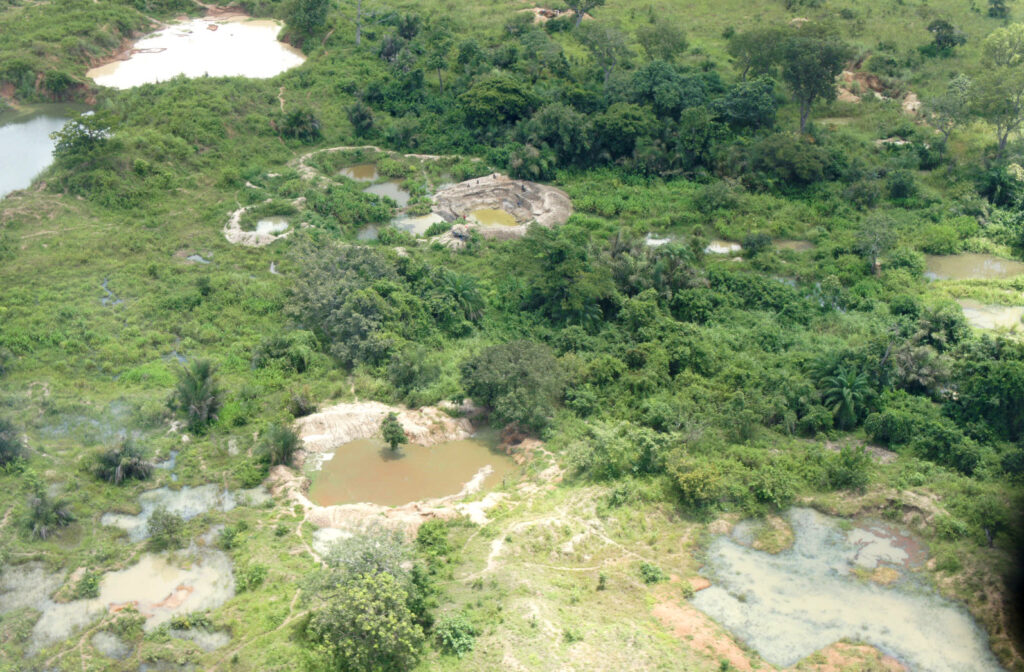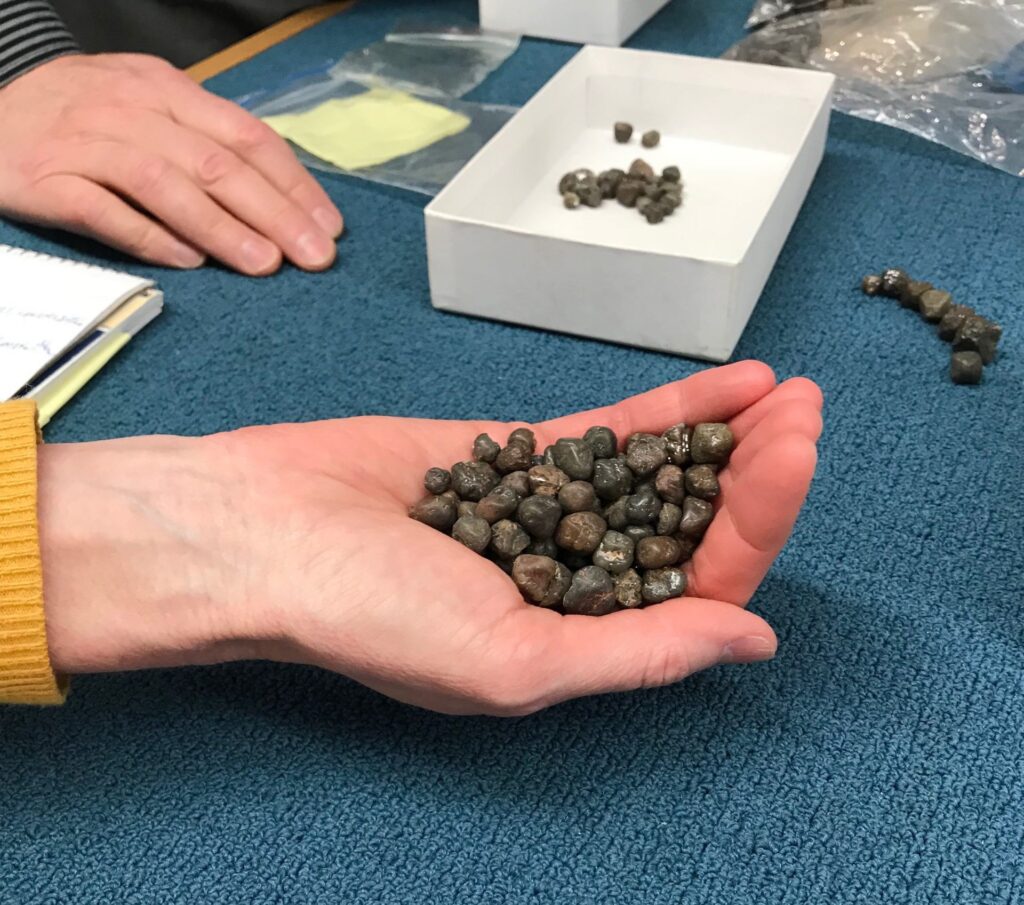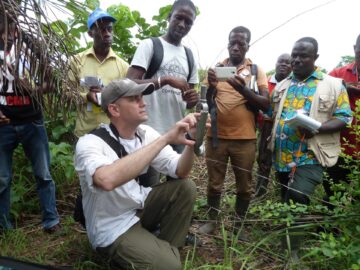
U.S. Geological Survey experts provide technical support to the State Department to help track and monitor the mining of conflict diamonds and minerals.
Conflict Minerals
Diamonds and other precious minerals may be dazzling, but they can have a darker side.
Conflict diamonds, also known as “blood diamonds,” fund terrorists and other armed groups who seek to commit crimes and overthrow legitimate governments. Other conflict minerals, including gold, tin, tantalum, and tungsten, are essential components in many technology products.
Increasingly, consumers are asking questions about where these materials come from and demanding stones and minerals that have be mined responsibly and have not funded armed conflict.

Rough, uncut, unpolished diamonds like these are often used by rebel groups to finance military action against legitimate and internationally recognized governments. Kimberley Process Certificates confirm that rough diamonds have not benefited these groups.

Responsible Sourcing
The State Department works with governments, international organizations, and the business community to sever the links between mineral resources and armed conflicts.
This includes participating in the Kimberley Process, which regulates the international trade of rough diamonds, and building support for due diligence guidelines that promote conflict-free supply chains for all minerals.
The State Department and its partners also work to improve trade regulations and transparency in high-risk areas around the world.
There are components of things we depend on every day that are made from minerals and metals mined all over the world—from toothpaste and cosmetics . . . to cell phones . . . to the jewelry and luxury goods we own.
—Peter Chirico, U.S. Geological Survey
